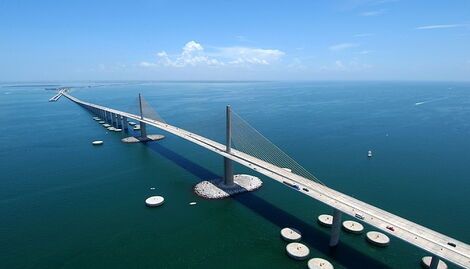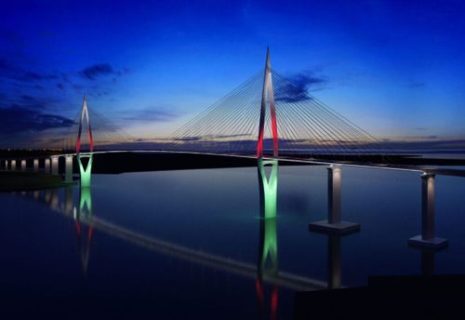The Mombasa Gate Bridge that is currently under construction when completed, it will be the longest bridge in Africa and will play a pivotal role in transforming transportation and connectivity within the Kenyan coast. This bridge costs about Ksh85 billion (approximately USD 600 million) for construction and it is meant to connect Mombasa Island to the South Coast to ease traffic jam and boost trades and tourism in the region.

Project overview
The Mombasa Gate Bridge will measure 1. of approximately 4 kilometers with a main span of 660 meters where it becomes the longest bridge in Africa. This cable-stayed bridge is to have four regular traffic lanes and would be 69 meters at its center to facilitate passage of seacraft beneath it. It has three spans with four piers on each side to form an effective arch for strength and endurance.
It is believed that the construction of the bridge will have a profound impact on the economic development of the region. The Mombasa Gate Bridge is expected that during the construction period of three years, nearly 8,100 employees and 72,900 indirect employees will be generated providing a boost to the economy. Upon construction, it will eliminate the existing ferry that has been in service since 1937 and provide people with a more efficient way of crossing the river.
Better accessibility will also drive property development and tourism in the South Coast regions, which are currently underexplored because of the constrains of ferry transport. This is expected to translate into increased traffic in the area and therefore adding value to the local business and hospitality industries.
Major financing of the Mombasa Gate Bridge project is hinged on a loan from the Japanese government with the Japan International Cooperation Agency (JICA). This partnership highlights the sound diplomatic ties between Kenya and Japan especially on the provision of quality infrastructure in the region. The funding agreement signed in 2019 gave the green light for the start of construction immediately, while the start of work is planned for 2024 due to various delays.
Challenges
There are many other factors that slowed the project down, not the least of which was the necessity to buy out and relocate about 1,706 households and numerous establishments to make way for the 155-acre wide bridge project. This process entailed considerable bargaining and significant financial outlay to secure as reasonable a recompense as possible to sufferers.

From the response of Otachi, NLC Chairperson he said that the request was made through the Kenya National Highway Authority (KeNHA) and promised that out of the affected households, the owners of the land will be compensated.
Furthermore, the environmental assessment factors have been integrated into the project planning initiatives. It is noteworthy that the design of the bridge takes into account the possible impact on the environment with particular focus on the water flow and marine life in Likoni Channel.
It is believed that once completed, the Mombasa Gate Bridge will ease traffic and goods transportation between the mainland and Mombasa Island apart from other regional projects like the Dongo Kundu bypass. The bridge will act as a transporter and structure that is significant to represent Kenya’s advances towards modernization.
In conclusion, therefore, the Mombasa Gate Bridge is an iconic structure that symbolizes Kenya’s infrastructural development agenda that is expected to foster economic growth, boost living standards of people, and put Kenya on the map geographically as a crucial link part of Africa.

